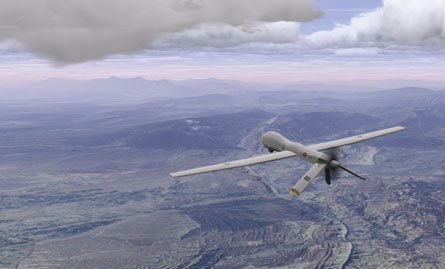An armed MQ-1 Predator unmanned air vehicle crash on 30 January 2012 outside Kandahar air base, Afghanistan, was caused by engine coolant leakage and handoff errors, according to a US Air Force accident report released on 29 May.
When a new Rotax engine was installed in the aircraft in July 2011, it was installed in such a way that the engine coolant line chafed against another part of the engine, which maintainers did not recognize.
"The coolant line was directly chafing on the oil pump-to-cooler line. The loss of coolant resulted in excessively high cylinder head temperature and oil temperatures. As the coolant level decreased the coolant temperature sensor began reading the lower temperature of the air in the radiator and prevented the cowl flap/cooling fan's operation, aggravating the high engine compartment temperatures," the report states.
Well into the mission over Afghanistan a cylinder head temperature warning light went off in the Creech AFB, Nevada ground control station (GCS) that was controlling the aircraft, and the high temperature resulted in reduced thrust. The GCS pilot did not follow the fully follow the relevant checklist by switching the cooling fan from 'auto' to 'on,' which contributed to the accident.
 |
|---|
USAF |
The ground controllers aimed the aircraft for Kandahar, but briefly lost control due to errors during the handoff to the local launch and recovery element (LRE). During 11 minutes of flight without controller contact, the Predator entered a bank and lost altitude, also cited as a contributing factor.
"Testimony from (the crew)agreed that an extra 500-1,000 feet of altitude would have been sufficient to safely recover the aircraft," said the report. During the uncontrolled bank, the Predator lost 1,200ft of altitude.
Though it crashed mostly intact, the aircraft was declared a loss.
Source: Flight International
















